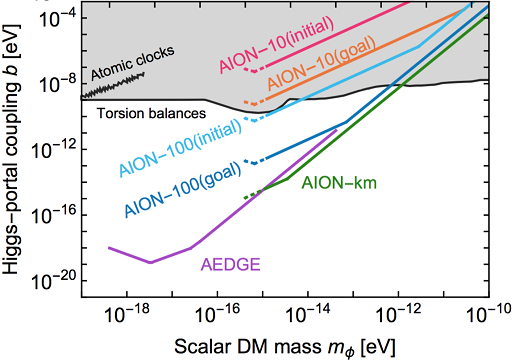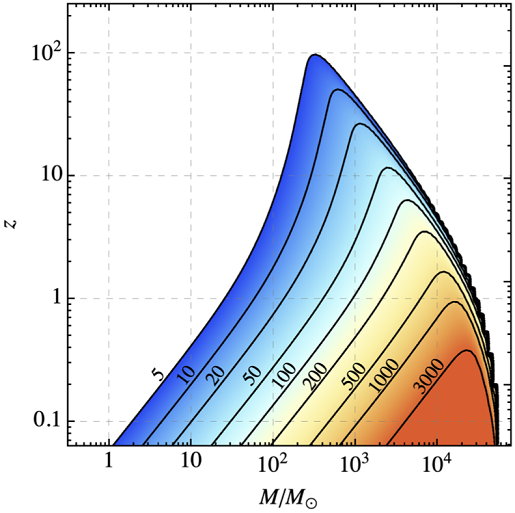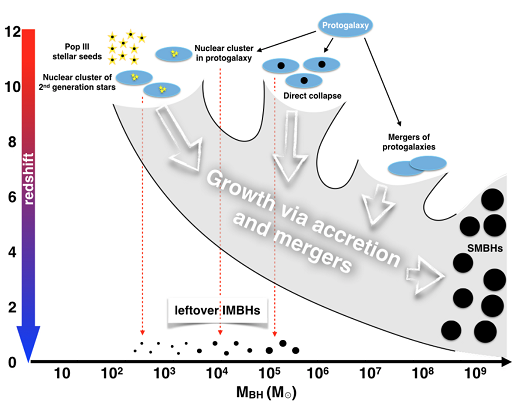The AION programme will be developed in four stages, by constructing gradually longer vertical detectors, spanning from an initial length of 10m, up to 100m and to km-scale and, finally, satellite-based (‘AEDGE’ reaching thousands of kilometres scale). Moreover, AION will be combined in a network with MAGIS in the USA, as well as with other interferometers, to further expand its capabilities.
Fig.1. Sensitivities of different AION scenarios to scalar DM interactions with the Higgs portal. The grey regions show parameter space that has already been excluded through previous experiments.
The frequency range (~0.01 Hz to 10 Hz) in which AION will be highly sensitive will make it the optimal experiment to search for signals caused by ultra-light bosons. The discovery of these particles would be a breakthrough and could reveal the nature of Dark Matter. There are several such candidate ultra-light bosons - including dilatons, relaxions, moduli, axions and vector bosons - that are able to produce a signal in the frequency range of AION. Such hiddensector particles could play a crucial role in particle physics beyond the Standard Model. The early stages of AION will already have the potential to search for ultra-light dark matter candidates in a large mass range from ~ 10−12 to ~ 10−17 eV with unprecedented sensitivity (Fig.1).
AION will also be a fantastic experiment for the detection of gravitational waves in the mid-frequency range, where currently operating and planned GW DETECTING DARK MATTER AND GRAVITATIONAL WAVES WITH AION Val Gibson & Roberto Maiolino detectors are relatively insensitive. In this frequency range it will be possible to detect the merging of Intermediate Mass Black Holes (IMBH), with masses in the range from 100 to 10,000 solar masses, up to high redshift (Figs.2-3). These IMBH are expected from various theories as the result of the first generation of stars and from the direct collapse of pristine clouds in the early Universe, and are thought to be the building blocks (through merging and accretion) of the super-massive black holes found at the centres of galaxies. Additional fascinating sources of gravitational waves in the frequency band of AION are first-order phase transitions in the early Universe and cosmic strings.
Fig.2. Sensitivity of AION (1km) o the mergers of IMBHs with the contours showing the signal-to-noise ratio.
Fig.3. Possible pathways for the formation of Supermassive Black Holes (SMBHs), several of which pass through the formation and mergers of Intermediate-Mass Black Holes (IMBHs), with some IMBHs left over at low redshifts (courtesy of Woods et al. arXiv:1910.06346).
[This article is partly based on the White Paper Badurina et al. ‘AION: An Atom Interferometer Observatory and Network’ arXiv:1911.11755v2]
Members of KICC involved in AION include: Professor Martin Haehnelt





